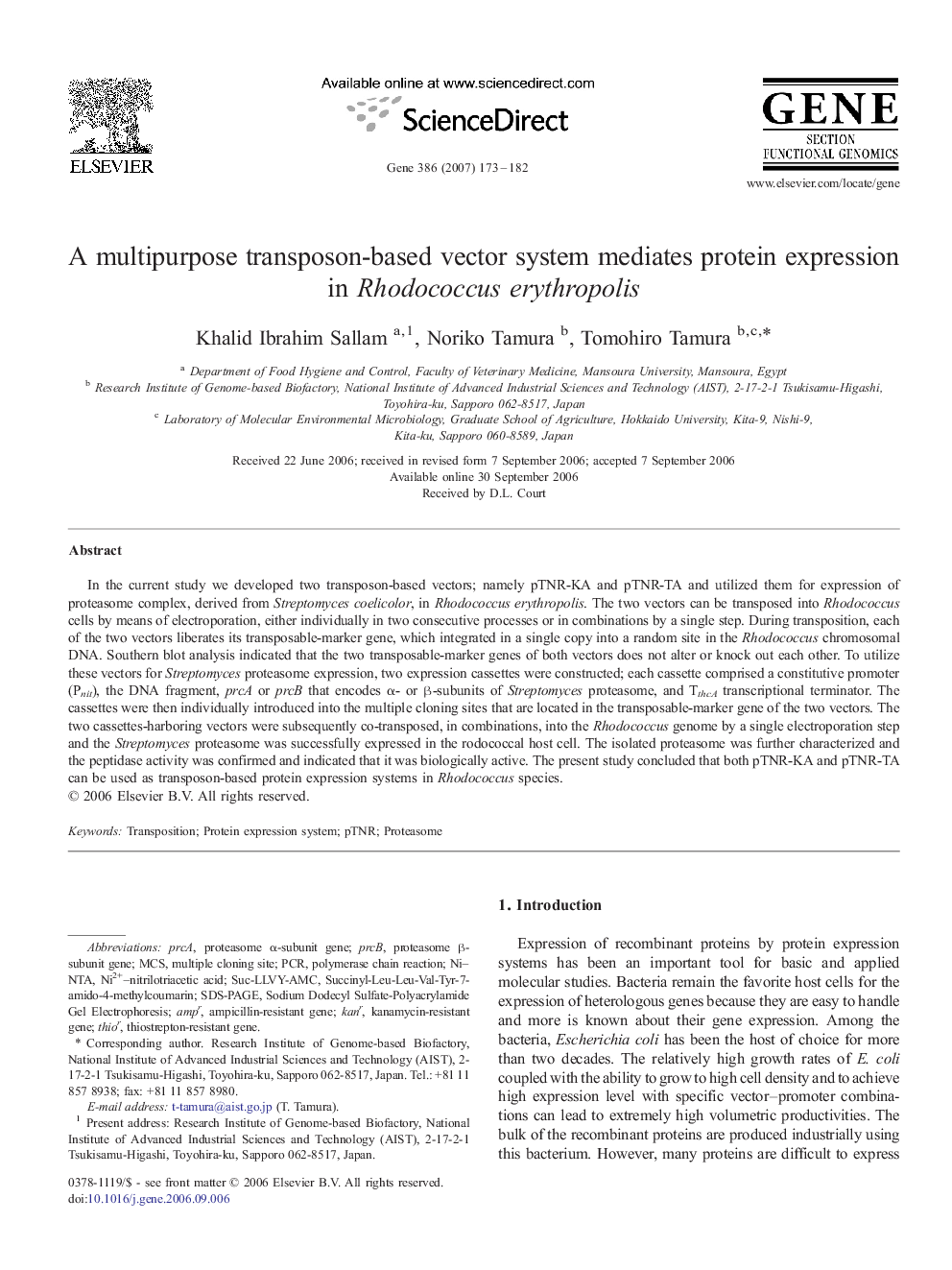| Article ID | Journal | Published Year | Pages | File Type |
|---|---|---|---|---|
| 2819948 | Gene | 2007 | 10 Pages |
In the current study we developed two transposon-based vectors; namely pTNR-KA and pTNR-TA and utilized them for expression of proteasome complex, derived from Streptomyces coelicolor, in Rhodococcus erythropolis. The two vectors can be transposed into Rhodococcus cells by means of electroporation, either individually in two consecutive processes or in combinations by a single step. During transposition, each of the two vectors liberates its transposable-marker gene, which integrated in a single copy into a random site in the Rhodococcus chromosomal DNA. Southern blot analysis indicated that the two transposable-marker genes of both vectors does not alter or knock out each other. To utilize these vectors for Streptomyces proteasome expression, two expression cassettes were constructed; each cassette comprised a constitutive promoter (Pnit), the DNA fragment, prcA or prcB that encodes α- or β-subunits of Streptomyces proteasome, and TthcA transcriptional terminator. The cassettes were then individually introduced into the multiple cloning sites that are located in the transposable-marker gene of the two vectors. The two cassettes-harboring vectors were subsequently co-transposed, in combinations, into the Rhodococcus genome by a single electroporation step and the Streptomyces proteasome was successfully expressed in the rodococcal host cell. The isolated proteasome was further characterized and the peptidase activity was confirmed and indicated that it was biologically active. The present study concluded that both pTNR-KA and pTNR-TA can be used as transposon-based protein expression systems in Rhodococcus species.
